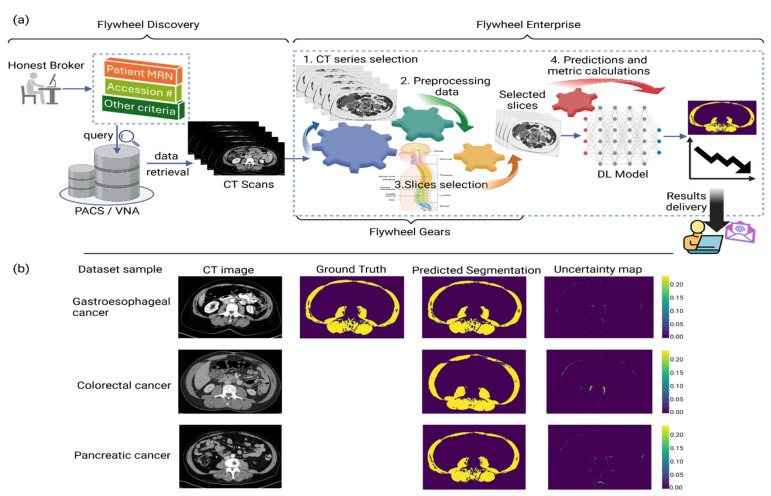Figure 1.
(a) Automated pipeline for skeletal muscle segmentation built on Flywheel platform. Processing inside Flywheel Enterprise is undertaken through scripts called “gears”. The data import from PACS/VNA is a manual process. Once the data are imported on Flywheel, the gears start running automatically in a sequence to perform the various tasks: (1) extract the required axial series; (2) data preprocessing; (3) identification of slices corresponding to each vertebra level; (4) slices fed to the trained deep learning model to output the segmented skeletal muscle, along with an uncertainty map that depicts the model confidence. This automated pipeline supports a longitudinal study of patients’ SMI (cm2/m2) for end users within Moffitt Cancer Center. (b) Sample slices at mid-L3 level representative of each dataset of gastroesophageal, colorectal, and pancreatic cancers. In this model, ground truth represents segmentation outputs from the widely validated Sliceomatic Software. The deep learning model output includes the predicted segmentation mask and the uncertainty map depicting the model confidence.

